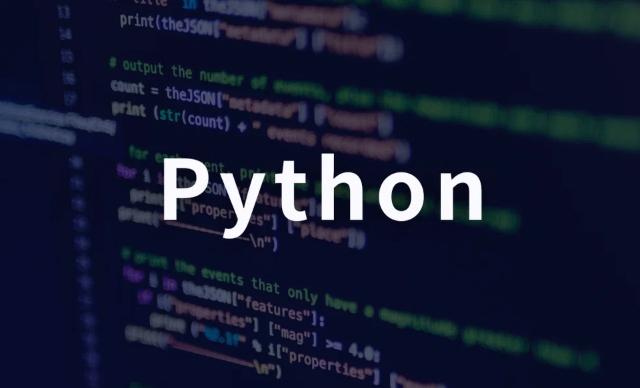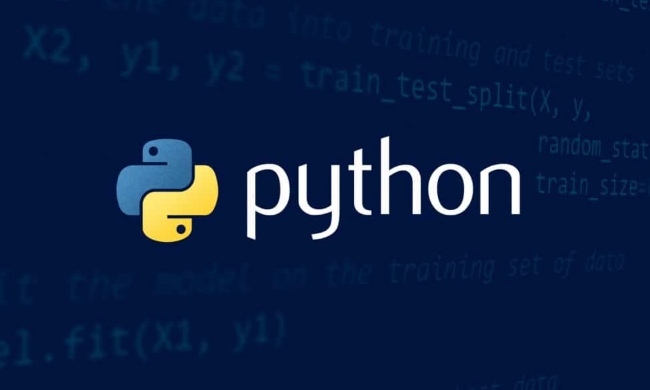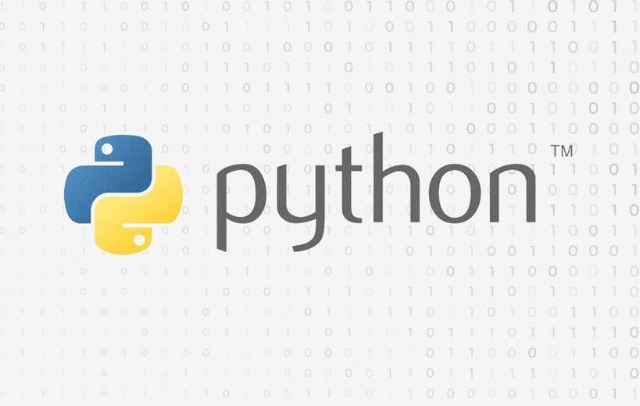How do you connect to a database in Python?
Jul 10, 2025 pm 01:44 PMTo connect to a database in Python, use the appropriate library for the database type. 1. For SQLite, use sqlite3 with connect() and manage with cursor and commit. 2. For MySQL, install mysql-connector-python and provide credentials in connect(). 3. For PostgreSQL, install psycopg2 and configure connection parameters including SSL if needed. 4. Optionally, use SQLAlchemy ORM for abstraction across databases by defining models and using create_engine(). Always close connections and avoid SQL injection by using parameterized queries.

Connecting to a database in Python is pretty straightforward once you know which type of database you're working with. Most common databases—like MySQL, PostgreSQL, SQLite, or MongoDB—have corresponding Python libraries that handle the connection process.

Here’s how to do it for a few popular ones.
Using SQLite with sqlite3
SQLite is built into Python, so no extra installation is needed. It's great for small apps or local development.

To connect:
import sqlite3
conn = sqlite3.connect('example.db')
cursor = conn.cursor()This creates a file-based database called example.db (or opens it if it already exists). You can then run SQL queries using the cursor object.

If you want to create a table:
cursor.execute('''CREATE TABLE IF NOT EXISTS users
(id INTEGER PRIMARY KEY, name TEXT, age INTEGER)''')
conn.commit()Don’t forget to close the connection when you’re done:
conn.close()
A couple things to watch out for:
- Always call
.commit()after making changes. - Use parameterized queries instead of string formatting to avoid SQL injection.
Connecting to MySQL with mysql-connector-python
For MySQL, you’ll need to install a package first:
pip install mysql-connector-python
Then connect like this:
import mysql.connector
conn = mysql.connector.connect(
host="localhost",
user="your_username",
password="your_password",
database="your_database"
)
cursor = conn.cursor()You can also run queries just like with SQLite:
cursor.execute("SELECT * FROM users")
results = cursor.fetchall()
for row in results:
print(row)Common issues:
- Make sure your MySQL server is running.
- Double-check credentials and permissions.
- Close the cursor and connection properly.
Working with PostgreSQL via psycopg2
PostgreSQL support comes through the psycopg2 library:
Install it first:
pip install psycopg2
Then connect:
import psycopg2
conn = psycopg2.connect(
dbname="your_db",
user="your_user",
password="your_pass",
host="localhost"
)
cursor = conn.cursor()You can execute queries the same way:
cursor.execute("SELECT version();")
print(cursor.fetchone())Some tips:
- If you're connecting over SSL, you may need to add
sslmode='require'or similar. - Like with MySQL, always remember to commit after writes.
Bonus: ORM Option with SQLAlchemy
If you're looking for something more flexible or abstracted, SQLAlchemy is a solid choice. It supports multiple backends and lets you define models instead of writing raw SQL.
Install it:
pip install sqlalchemy
Basic usage:
from sqlalchemy import create_engine
engine = create_engine("sqlite:///example.db")
connection = engine.connect()Or for PostgreSQL:
engine = create_engine("postgresql://user:password@localhost/dbname")It takes a bit more setup but gives you cleaner code and better portability across databases.
That’s basically how you connect to different databases in Python. Each method has its own use case—SQLite for simplicity, MySQL/PostgreSQL for more serious applications, and SQLAlchemy when you want an ORM layer.
The above is the detailed content of How do you connect to a database in Python?. For more information, please follow other related articles on the PHP Chinese website!

Hot AI Tools

Undress AI Tool
Undress images for free

Undresser.AI Undress
AI-powered app for creating realistic nude photos

AI Clothes Remover
Online AI tool for removing clothes from photos.

Clothoff.io
AI clothes remover

Video Face Swap
Swap faces in any video effortlessly with our completely free AI face swap tool!

Hot Article

Hot Tools

Notepad++7.3.1
Easy-to-use and free code editor

SublimeText3 Chinese version
Chinese version, very easy to use

Zend Studio 13.0.1
Powerful PHP integrated development environment

Dreamweaver CS6
Visual web development tools

SublimeText3 Mac version
God-level code editing software (SublimeText3)
 PHP calls AI intelligent voice assistant PHP voice interaction system construction
Jul 25, 2025 pm 08:45 PM
PHP calls AI intelligent voice assistant PHP voice interaction system construction
Jul 25, 2025 pm 08:45 PM
User voice input is captured and sent to the PHP backend through the MediaRecorder API of the front-end JavaScript; 2. PHP saves the audio as a temporary file and calls STTAPI (such as Google or Baidu voice recognition) to convert it into text; 3. PHP sends the text to an AI service (such as OpenAIGPT) to obtain intelligent reply; 4. PHP then calls TTSAPI (such as Baidu or Google voice synthesis) to convert the reply to a voice file; 5. PHP streams the voice file back to the front-end to play, completing interaction. The entire process is dominated by PHP to ensure seamless connection between all links.
 How to use PHP combined with AI to achieve text error correction PHP syntax detection and optimization
Jul 25, 2025 pm 08:57 PM
How to use PHP combined with AI to achieve text error correction PHP syntax detection and optimization
Jul 25, 2025 pm 08:57 PM
To realize text error correction and syntax optimization with AI, you need to follow the following steps: 1. Select a suitable AI model or API, such as Baidu, Tencent API or open source NLP library; 2. Call the API through PHP's curl or Guzzle and process the return results; 3. Display error correction information in the application and allow users to choose whether to adopt it; 4. Use php-l and PHP_CodeSniffer for syntax detection and code optimization; 5. Continuously collect feedback and update the model or rules to improve the effect. When choosing AIAPI, focus on evaluating accuracy, response speed, price and support for PHP. Code optimization should follow PSR specifications, use cache reasonably, avoid circular queries, review code regularly, and use X
 python seaborn jointplot example
Jul 26, 2025 am 08:11 AM
python seaborn jointplot example
Jul 26, 2025 am 08:11 AM
Use Seaborn's jointplot to quickly visualize the relationship and distribution between two variables; 2. The basic scatter plot is implemented by sns.jointplot(data=tips,x="total_bill",y="tip",kind="scatter"), the center is a scatter plot, and the histogram is displayed on the upper and lower and right sides; 3. Add regression lines and density information to a kind="reg", and combine marginal_kws to set the edge plot style; 4. When the data volume is large, it is recommended to use "hex"
 PHP integrated AI emotional computing technology PHP user feedback intelligent analysis
Jul 25, 2025 pm 06:54 PM
PHP integrated AI emotional computing technology PHP user feedback intelligent analysis
Jul 25, 2025 pm 06:54 PM
To integrate AI sentiment computing technology into PHP applications, the core is to use cloud services AIAPI (such as Google, AWS, and Azure) for sentiment analysis, send text through HTTP requests and parse returned JSON results, and store emotional data into the database, thereby realizing automated processing and data insights of user feedback. The specific steps include: 1. Select a suitable AI sentiment analysis API, considering accuracy, cost, language support and integration complexity; 2. Use Guzzle or curl to send requests, store sentiment scores, labels, and intensity information; 3. Build a visual dashboard to support priority sorting, trend analysis, product iteration direction and user segmentation; 4. Respond to technical challenges, such as API call restrictions and numbers
 python list to string conversion example
Jul 26, 2025 am 08:00 AM
python list to string conversion example
Jul 26, 2025 am 08:00 AM
String lists can be merged with join() method, such as ''.join(words) to get "HelloworldfromPython"; 2. Number lists must be converted to strings with map(str, numbers) or [str(x)forxinnumbers] before joining; 3. Any type list can be directly converted to strings with brackets and quotes, suitable for debugging; 4. Custom formats can be implemented by generator expressions combined with join(), such as '|'.join(f"[{item}]"foriteminitems) output"[a]|[
 python connect to sql server pyodbc example
Jul 30, 2025 am 02:53 AM
python connect to sql server pyodbc example
Jul 30, 2025 am 02:53 AM
Install pyodbc: Use the pipinstallpyodbc command to install the library; 2. Connect SQLServer: Use the connection string containing DRIVER, SERVER, DATABASE, UID/PWD or Trusted_Connection through the pyodbc.connect() method, and support SQL authentication or Windows authentication respectively; 3. Check the installed driver: Run pyodbc.drivers() and filter the driver name containing 'SQLServer' to ensure that the correct driver name is used such as 'ODBCDriver17 for SQLServer'; 4. Key parameters of the connection string
 python pandas melt example
Jul 27, 2025 am 02:48 AM
python pandas melt example
Jul 27, 2025 am 02:48 AM
pandas.melt() is used to convert wide format data into long format. The answer is to define new column names by specifying id_vars retain the identification column, value_vars select the column to be melted, var_name and value_name, 1.id_vars='Name' means that the Name column remains unchanged, 2.value_vars=['Math','English','Science'] specifies the column to be melted, 3.var_name='Subject' sets the new column name of the original column name, 4.value_name='Score' sets the new column name of the original value, and finally generates three columns including Name, Subject and Score.
 Optimizing Python for Memory-Bound Operations
Jul 28, 2025 am 03:22 AM
Optimizing Python for Memory-Bound Operations
Jul 28, 2025 am 03:22 AM
Pythoncanbeoptimizedformemory-boundoperationsbyreducingoverheadthroughgenerators,efficientdatastructures,andmanagingobjectlifetimes.First,usegeneratorsinsteadofliststoprocesslargedatasetsoneitematatime,avoidingloadingeverythingintomemory.Second,choos






